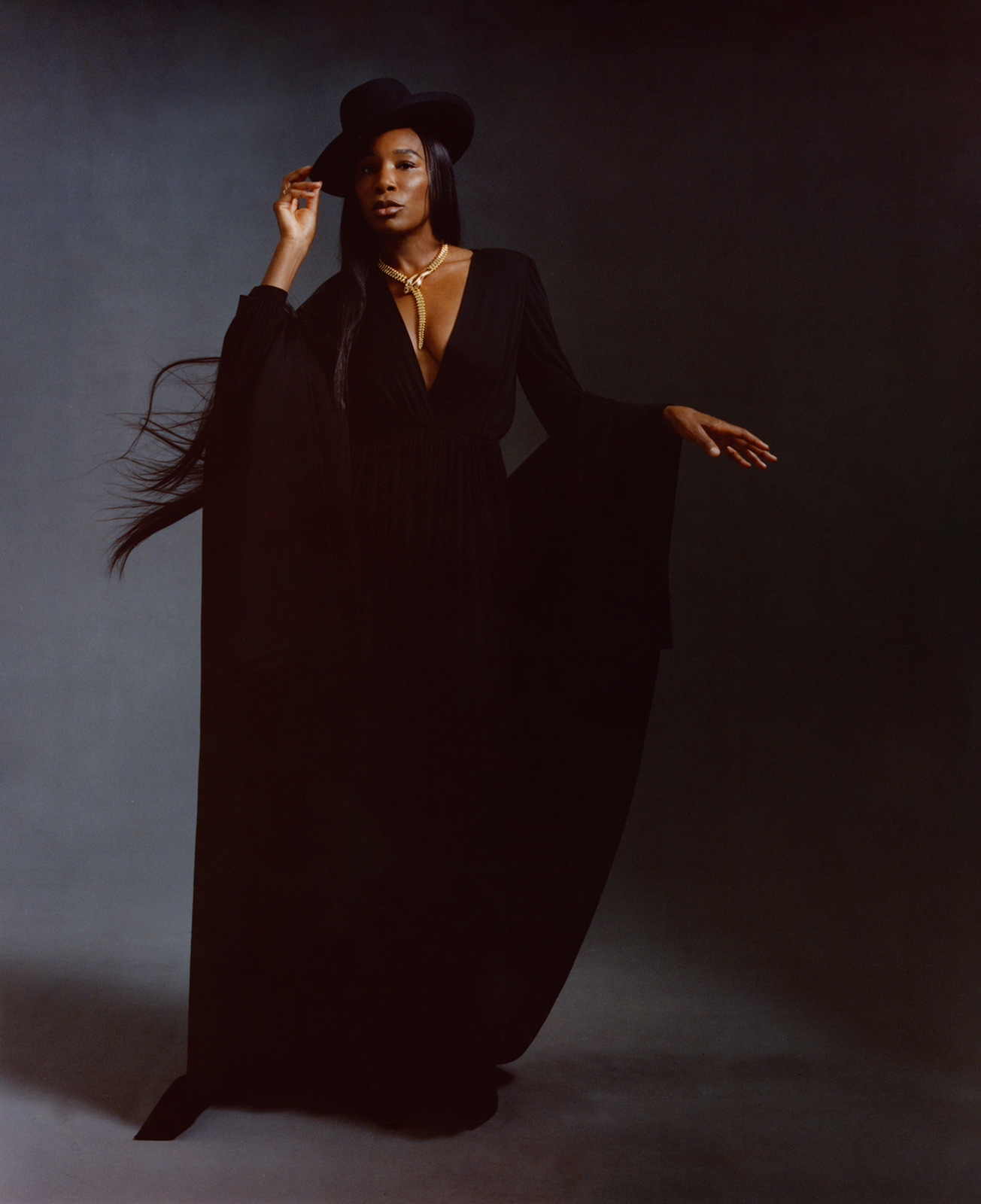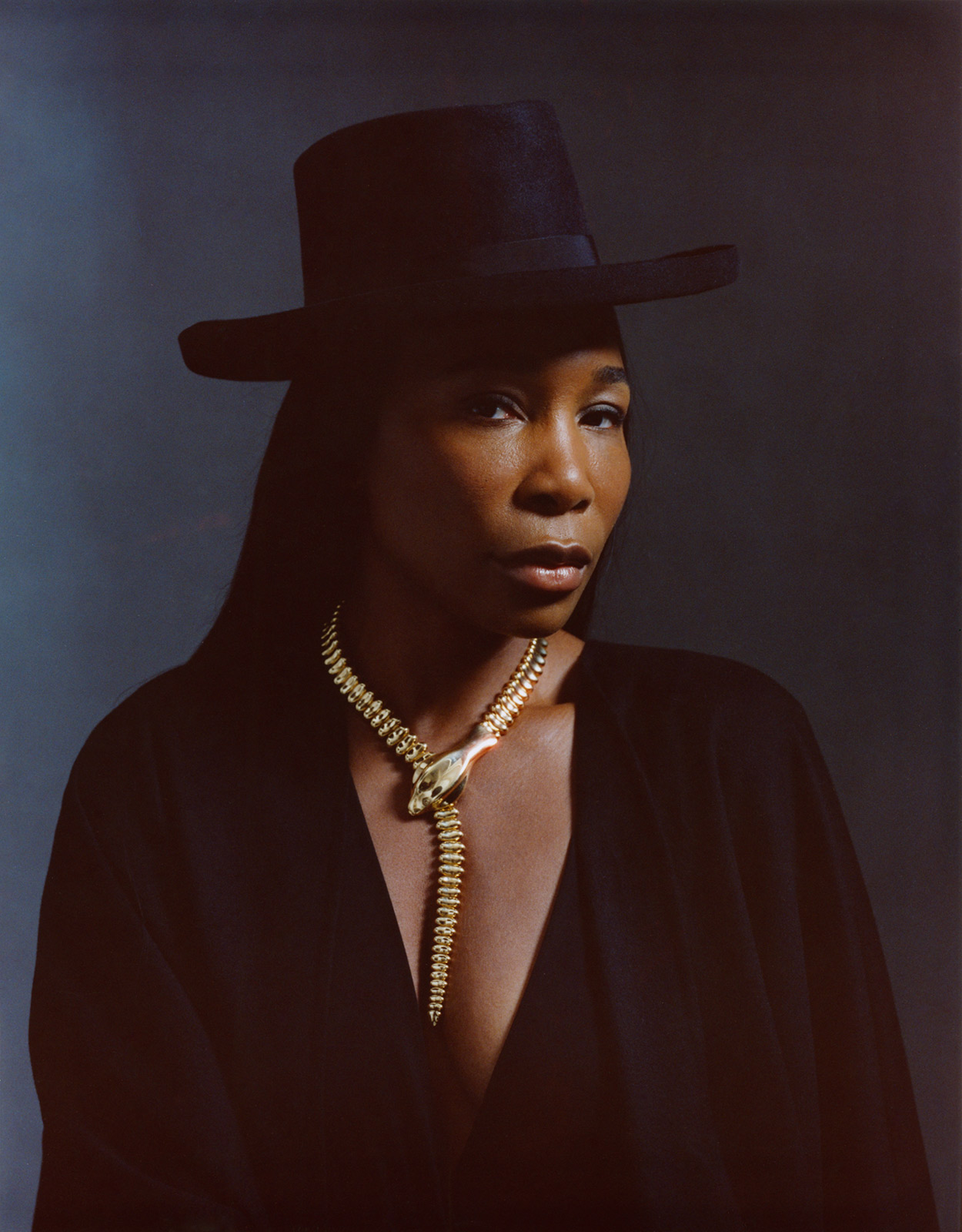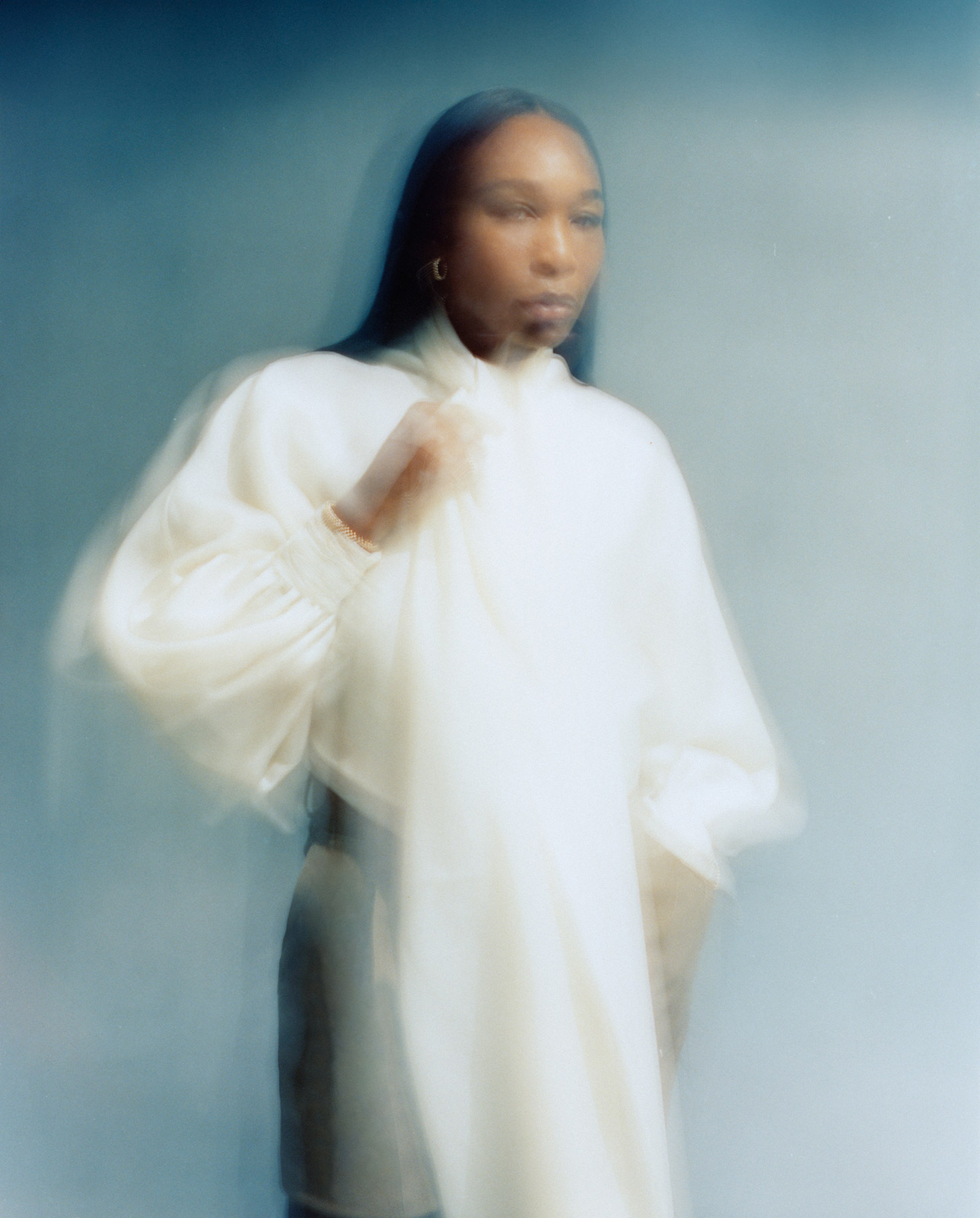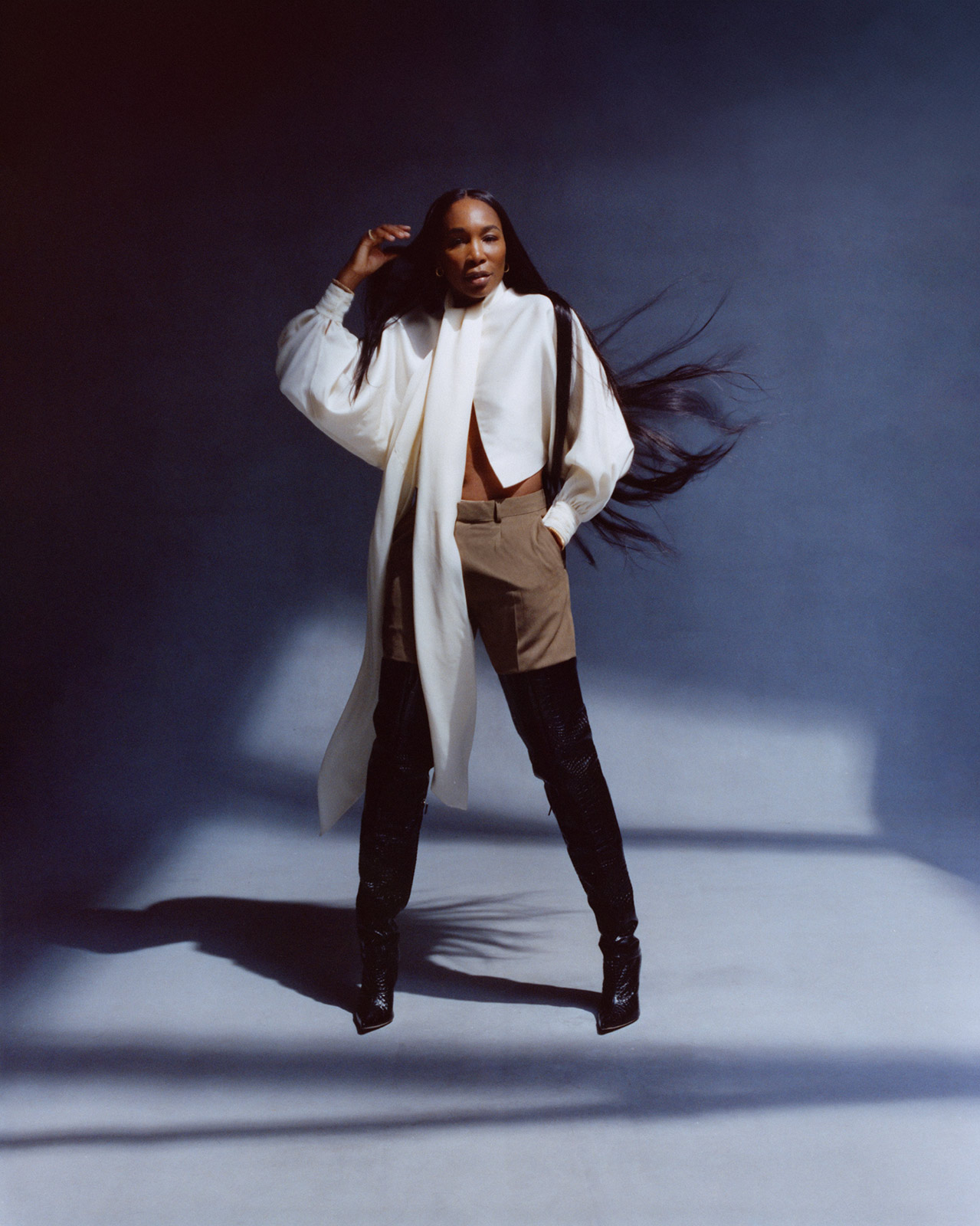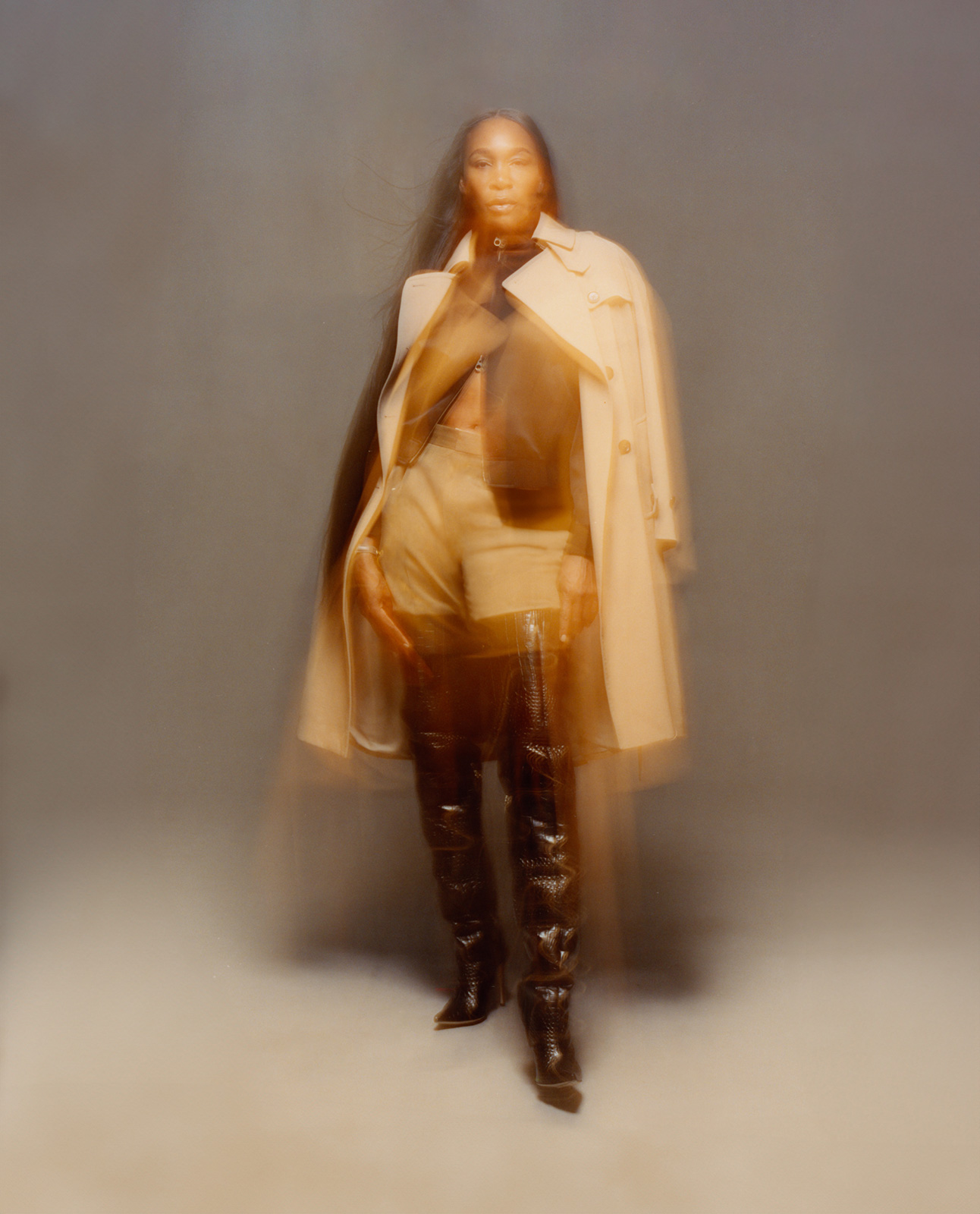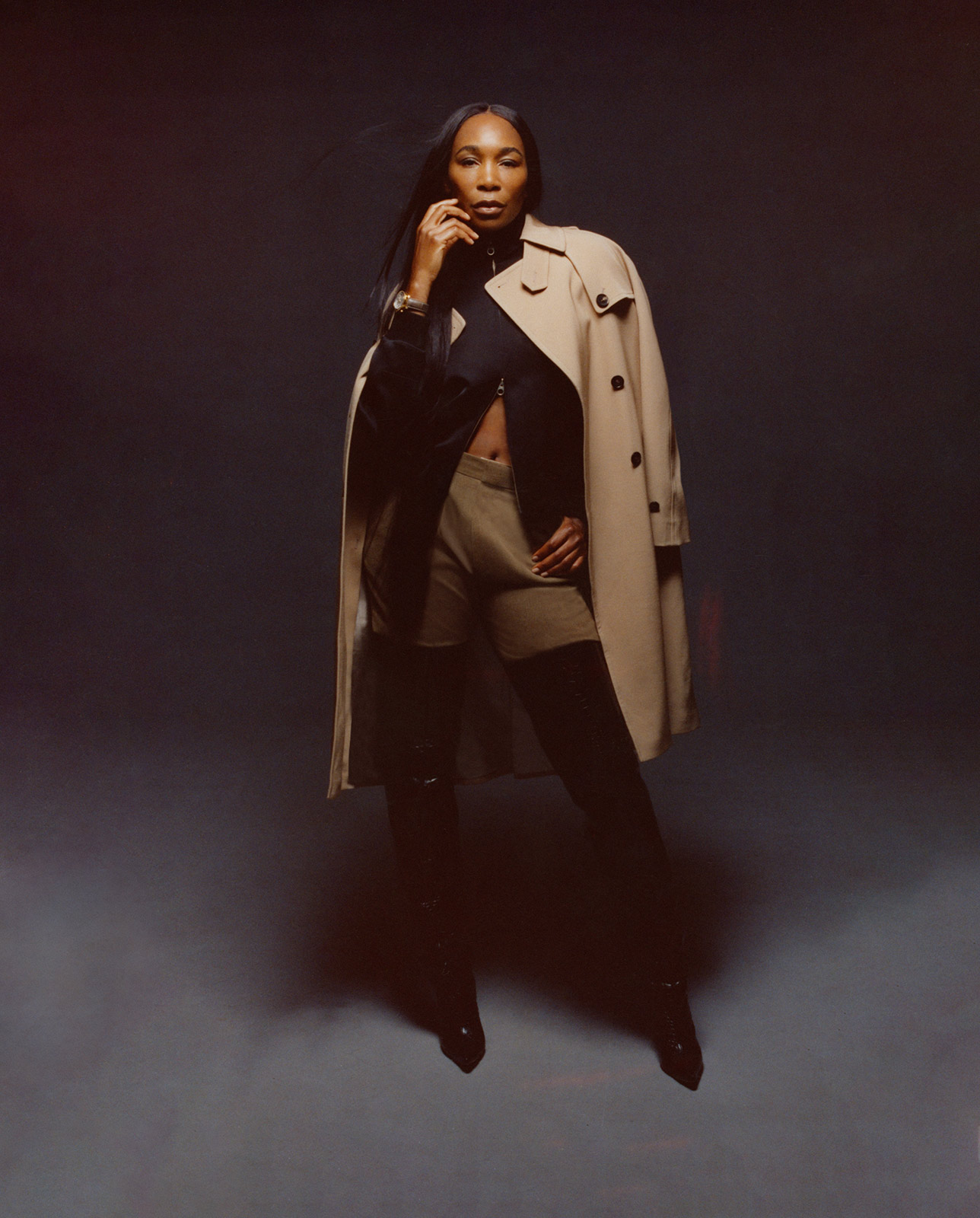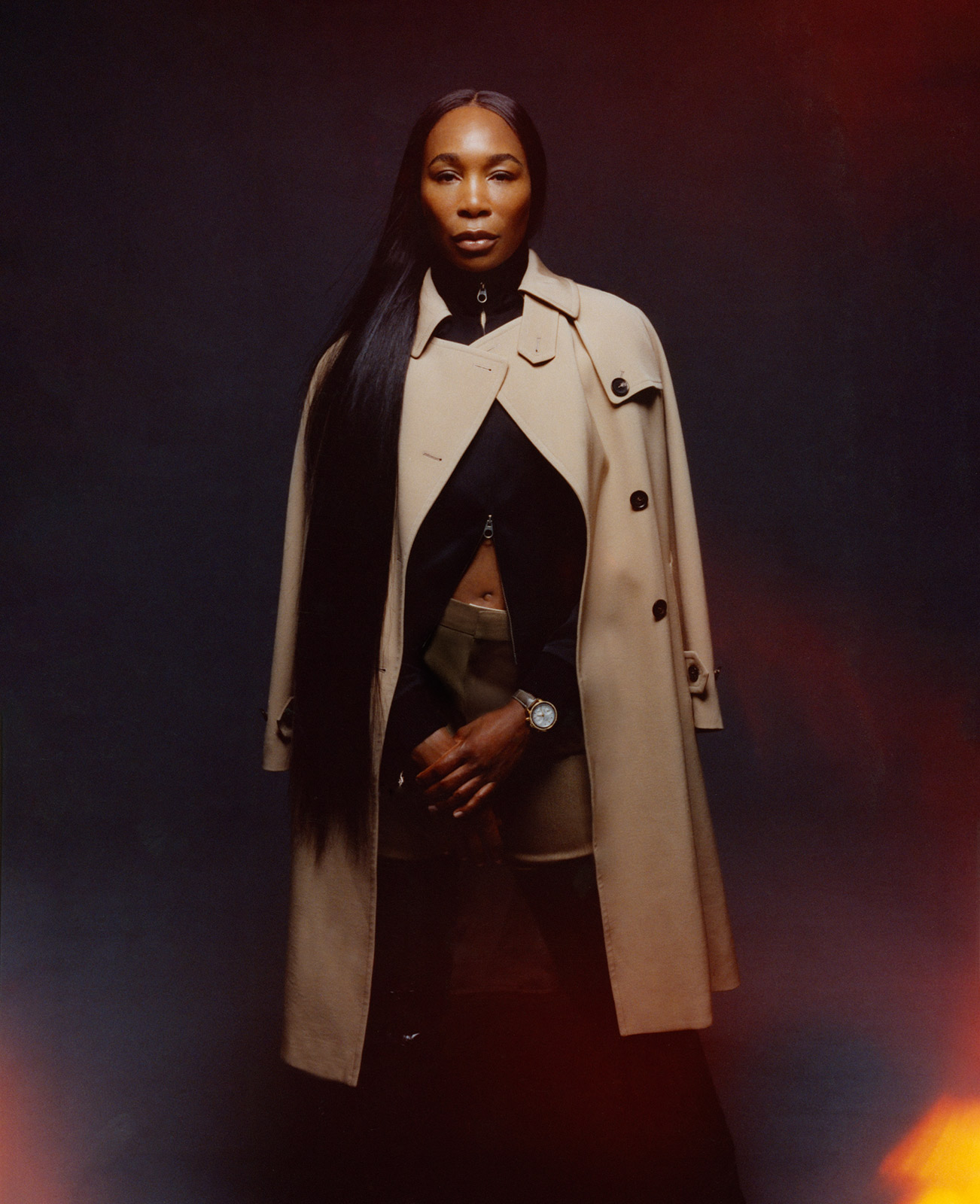For Document’s Fall/Winter 2024–25 issue, the athlete, author, and designer joins Style Director Ronald Burton III to discuss the creative and connective potentials of self-inquiry
Venus Williams is inarguably one of the greatest tennis players to have ever lived. Born in California, her parents moved her and her sister Serena to West Palm Beach, Florida, to join an elite tennis academy when she was 11 years old. She went pro at 14, subsequently earning seven Grand Slam singles titles between 1997 and 2008, and reigns undefeated in doubles with her sister, with an impressive 14-0 record. To this day, she is among the most decorated players of all time. She’s remained a household name in the athletic sphere since she debuted on the court and quickly earned the distinction of being the first Black woman to rank number one in the sport. But her record-breaking impact extends well beyond the court, with her inimitable influence reaching from sports into fashion, design (she runs the design firm V Starr Interiors), art, letters (she’s the author or co-author of multiple books, most recently Strive), and culture writ large.
When it comes to fashion, as she tells Document Style Director Ronald Burton III, “My moment started out on the court when I was wearing these cutout dresses back in the day, in the early ’90s.” Her standout looks quickly earned her cachet in the industry, and in 2000 she launched the Venus Collection with Reebok (featuring an iconic yellow cutout spandex dress) as well as her own activewear line she debuted at New York Fashion Week in 2012. As heritage tennis brand Lacoste emblazoned on a crewneck in 2023, “Venus did it first.”
Together, Williams and Burton discuss the evolution of their perspectives and how they connect and collaborate to influence the present and the future.
Ronald Burton III: Venus, I’m so happy to be chatting with you. I want to start off with a simple question: What does fashion mean to you?
Venus Williams: Oh my gosh. It’s a way you express yourself. You wake up every morning and you make a decision, right? What you put on dictates who you might be that day, and that day can change. It’s an art form that we all get to practice every single day. I love that opportunity to have your own self-practice.
Ronald: Before I got into fashion, my foray into it was through dance.
Venus: Oh, I had no idea.
Ronald: Yeah, I’m classically trained.
Venus: I’m a dancer in my heart.
Ronald: I went to performing arts high school, so I studied theater for two years before I found my love for dance. But what inspired me and what I fell in love with about fashion was that it felt like theater, in terms of the approach. I love this idea of being able to get up and morph into different characters. There was this space to create a varied language.
You’ve obviously had so many fashion moments. Are there any in particular that have stood out to you? Any moments that have felt pivotal in terms of your approach or connecting your love to it further?
Venus: My moment started out on the court when I was wearing these cutout dresses back in the day, in the early ’90s. That was this moment in tennis where people started to think about tennis fashion, and it began to change and evolve.
From there, my sister and I started to transition those moments off the court too. I think Serena and I were some of the first athletes to go to the Met [Gala] back in the day, so that was amazing.
This year at the Met, I was seven feet tall with my Kiki boots and my mirror dress from Marc Jacobs. I absolutely loved being that tall. When I took the shoes off, I felt deflated. It was the time of my life.
It’s been extremely fun to explore myself over the years and see myself change. And even the braids and beads, it was a great moment to introduce my culture to the world, because people saw that and they thought, ‘This is new. Wow, what is it?’ And I’m like, ‘African Americans and Africans have been doing this for centuries. This is who we are.’ To be able to create this fashion moment out of my own culture was a great opportunity.
“What’s important when it comes to legacy is to leave more than what you took.”
Ronald: That was one of the most standout moments I’ve seen from the Met over the past several years. It was important to me for a number of reasons. One being that Marc Jacobs is a New York designer, and also his importance not just in fashion but in moving culture forward as a whole. How was that experience working with Marc?
Venus: It was fantastic to be a part of his crew. He’s such a legend. And he’s so kind, and he’s done so much but still keeps his feet on the ground and is still innovating and pushing the envelope. I love being a part of that too.
Ronald: Fashion is feeling much more like a community than before. Everyone has the space to create their own language. There’s beauty and magic in that.
In my own work, dressing talent, the best synergy happens when you’re aware of the entirety of who someone is—all the aspects of their personality and the nuances of what makes them who they are. You’re not a blank canvas, you are your own person, and my job is to see how we can expand upon that.
Venus: There’s also beauty in letting go. If you try to control every moment, try to say, ‘This is who I am. This is what I like to wear,’ then you don’t ever get that kind of exploratory space. Whenever I work with designers or stylists, I try to see what they’re thinking too, and almost become the palette. Or even at photo shoots when they’re like, ‘What do you want to wear?’ I’m like, ‘Put me in something.’ Because then you’re able to get outside of yourself. When you let go and let someone else see you in a different way, that’s when things can go boom.
Ronald: When we’re talking about what’s interesting in fashion right now, it’s important that there’s a turn to a new guard—across the board between photographers, stylists, designers. Coming up, fashion sometimes felt so out of reach, and it’s so lovely now to look at all of the different collaborators that I’m working with. There’s an added value in terms of the diversity both in front of and behind the camera. It’s a ‘pinch me’ moment to see that you are a part of the change you’ve always wanted to see.
Over the course of your career, you’ve worn so many hats. You’re one of the greatest tennis athletes of all time, you’re in fashion, in the interior design space, all in addition to being an author. How do you occupy those various spaces and identities?
Venus: You have to explore yourself. No one is one-sided, the world isn’t one-sided. So it has been interesting for me to not just be one-sided, because tennis can’t last forever. What’s next? What else am I passionate about? Part of being human is finding your passion, because that’s a place of happiness too. I’ve always been encouraged to find out what my passions were outside of the court, and that’s changing and evolving too.
Ronald: There’s a beauty to that. I can speak from my years when I was dancing. When I decided to step away from it, I told myself that I never wanted to be strictly defined by what I did, that there were all these aspects of my personality, there were all these things that I wanted to explore. Coming up and working at something so intensely, your identity can kind of get lost in that. What’s shaped the path I’m growing on—from theater, to dance, to now working in fashion, and also to what may come after that—is waking up every day and saying, ‘Ronald, what is it that you want to say today? What are all these aspects and nuances of who you are that make you are? How can you give all of yourself that love?’
Venus: Agreed. I love the dance connection. My whole goal is to find more time to dance. I don’t know how I’m going to do it, but I have to.
Ronald: Listen, when you’re in New York, let me know, we can hit up Joffrey Ballet. We can have a nice little one-on-one.
Venus: Let’s do it, please.
I really believe in evolution, that you shouldn’t look back at a picture and say, ‘Gosh, I have the same hairstyle and same look as I did 10 years ago.’ You’ve got to move on, you’ve got to move forward or you become a relic. Or you haven’t really achieved your best self. It’s good to have the roots, but it’s also important to evolve too.
I’m so caught up and excited about the future that I’m not always looking back on what people might think. When you think about tomorrow, in projects or in regular life, it’s so alluring that I don’t really focus on legacy. That might sound crazy or strange. I’m happy with the now, and I love the future.
What’s important when it comes to legacy is to leave more than what you took. Not even more than what you took, but be a part of something bigger than you. That means that hopefully you’ve given back to people, and given back to the world, because if you’re just thinking about your legacy and what you achieved, that’s so small.
“You have to explore yourself. No one is one-sided, the world isn’t one-sided.”
Ronald: I was actually having this conversation with a few other Black creatives, looking at how much things have changed and how open spaces have become for people of color in fashion, but also looking at how we also still have so far to go. You brought up a great point about being present in the now, because that leads to a more fruitful future. In my work, what I’m trying to do is understand that where I am and what I’m doing is enough. And you have tomorrow to make that better and to build on that. I look at legacy as being the present, not necessarily the past or future. Obviously it’s going to live on, but it’s me taking each day as it comes and doing my best with what that is, and knowing that that will have an impact.
Venus: Exactly. Sometimes doing something positive is enough. If you do something positive with your life, someone’s always watching. It doesn’t matter if it’s on the worldwide scale or on a personal level, you make an impact because you never know who’s watching.
Ronald: Absolutely. And I think you can sometimes feel the burden of speaking for so many that you forget about your personal voice. I say you have to become selfish to become selfless in a way, because you really have to understand what your needs are and know that you’re not the only person that may feel this way. You’re not doing this alone. You’re liking what you’re doing, but there’s going to be someone next to you, or maybe even ahead of you, that’s going to look back and find something they relate to.
Venus: It’s a chain of positivity. It was because my parents were so positive and made a huge impact in my life that I was able to get on the court and do something positive for me, that it was my dream to impact other people’s lives.
Ronald: I consider myself to be a very, very big dreamer. I’ve always envisioned myself ahead of where I was, if that makes sense. What I’ve always been really steadfast with in my work across the arts in general is the power of perspective and a point of view, and understanding that how we live our lives is the backdrop to the world. I’m a very curious person. I’m always looking at what someone’s wearing or where they’re sitting or why they’re watching this film. I love to gather information, you know what I mean? And sit with it and see what makes sense for me and how that can inform what I go on to do after.
Venus: I completely agree. Personally, I call myself a nomad because I’m always moving, and I love that. I’ve been moving my whole life since I was a teenager. Staying in one place seems almost unfathomable. Traveling opens you up to other people’s opinions and cultures. The news cycle can be very one-sided no matter where you live. But once you leave, you’re able to see other perspectives and other ways of thinking and other ways of doing things. That’s so important.
A lot of people think creativity is spontaneous, but it takes time. And when you’re extremely busy, you don’t have that moment to sit down and be creative and enjoy the process and find your inspiration. I’m constantly making notes on what inspires me, so that way when the time comes to be creative, I’m already in that mode. In the perfect world, you have weeks to sit around to get inspired and figure out what’s moving you, but it doesn’t work like that in real life.
“How you use your mind on the court can benefit you off the court too.”
Ronald: I generally try to take some time to recharge in the morning and at night. As the work day goes on, we’re all inundated with a million and one things—so it’s either very, very late at night or very, very early in the morning when I can sit with my thoughts. Like you said, I keep a running tab on my phone, and I also jot it down physically, because a lot of times doing what we do and constantly being on the go and being on the move, there are always so many things flurrying. It’s those really odd hours, probably between 12 and 4 am, when the world is at peace and still and I can rummage in my thoughts.
I’m not so good at writing out advance plans like: Where do I want to be a year from now? Where do I want to be two years from now? Once I start to fixate on a goal or an idea, if I don’t meet it then I feel like I’ve let myself down in so many ways. I guess in terms of what’s next is continuing to create, continuing to explore, continuing to provide platforms to others that may not have it, that may not necessarily have the access to it, and being able to amplify fashion and culture and what that all means.
Venus: I hear you. I like that. Sometimes the best laid plans are the ones that aren’t laid. There should be room for that too, and room for spontaneity. I’m such a structured person, I think because of sports. Part of me is always looking to get things scheduled as soon as possible, but I’m also looking for moments of being able to breathe.
I’m looking forward to sharing my information, mentoring people, young kids, obviously tennis players, but even outside of that. And even kids who are not going to go pro, they can learn so much from the sport. That’s an exciting moment for me right now. I also just had a book come out and that was part of it too, sharing my knowledge and information, because I’m at this point in my life where I want to share. Like, this is what I learned, these are the mistakes I made, this is what worked, this is what didn’t. I really look forward to sharing the knowledge from over the years.
When you think about it, only the top 100 players play the US Open or Wimbledon. There are thousands of people, maybe millions, who would love to play this sport, but they aren’t necessarily going to make it to the top level. It’s about what you learn in sport. And life is sport and sport is life. They mirror each other. You have to fail, you have to succeed, you have to start over, you have to be resilient, you have to have persistence, to learn to work on a team. All those things that you learn while chasing a ball or being on a court. It’s a wonderful way to unconsciously learn these lessons. And when you walk off the court, you have all these skills that you apply to life. That’s what I like to emphasize when I’m talking to kids: How you use your mind on the court can benefit you off the court too.
Ronald: Absolutely. Listen, Venus, I’ll bring you to some ballet classes. You can teach me a couple rounds of tennis.
Venus: There we go.
Ronald: There’s the exchange.
Venus: Just be patient with me.
Ronald: I got you. Baby steps.
Hair E Williams using Kerastase US. Make-up Liselotte van Saarloos at The Wall Group using Merit Beauty and Omorovicza. Movement Director Antwon Keith Collier. Manicure Pika at See Management using Essie. Photo Assistants Conor Ralph, Isaac Schell. Stylist Assistant Pascia Sangoubadi. Tailor Jacqui Bennett at Carol Ai Studio Tailors. Hair Assistants Karen Zamor, Marvin Tarver. Production Director Lisa Olsson Hjerpe at CHAPEL Productions. On Set Production Colin Boyle, Celina Ochoa. Shot at Gary’s Loft. Backdrops by Broderson Backdrops.



